![]()
![]()
![]()
Use LEFT and RIGHT arrow keys to navigate between flashcards;
Use UP and DOWN arrow keys to flip the card;
H to show hint;
A reads text to speech;
13 Cards in this Set
- Front
- Back

|
-Muscovite -Perfect cleavage in 1 direction -H=2.5 on cleavage surfaces, around 4 at a right angle to cleavage -Crystals have a platy 'micaceous' habit -Individual plates tend to be elastic -Crystals are often clear and light grey to silvery, & may be tan or light brown |
|
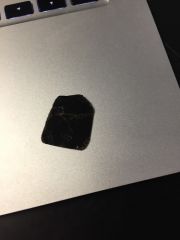
|
-Biotite -Perfect cleavage in 1 direction -Crystals tend to occur with a platy 'micaceous' habit -Individual plates tend to be brittle -Crystals are often deep brown, and may be reddish brown to black |
|
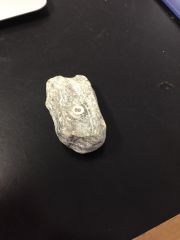
|
-Talc -Platy habit is common -H=1 -Masses of crystals have a soapy, smooth feel -Crystals are commonly white to clear, & may be light green |
|
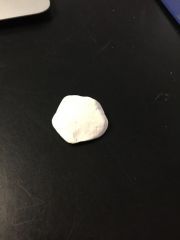
|
-Kaolinite (Clay) -Crystals are usually smaller than mm-scale to microscopic -Occur in white, chalky masses -Earthy odor when damp -H=2.3 |
|
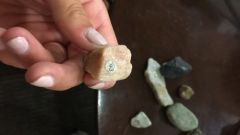
|
-Orthoclase (Feldspar) -Prominent cleavage in 2 directions that are close to 90 degrees apart -H=6 -May be clear, white, tan, pink, red, or brown -Crystals may contain thin layers of lightly colored plagioclase (perthitic texture) |
|

|
-Plagioclase (Feldspar) -Prominent cleavage in 2 directions that are close to 90 degrees apart -H=6 -May be clear, white or grey -One cleavage plane may show thin parallel striations (twin planes) |
|
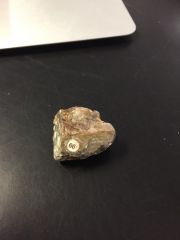
|
-Kyanite -Perfect cleavage in 1 direction -Commonly has a bladed habit -H=5 along crystals & H=7 across crystals -May be colorless, grey or cyan (blue)
|
|
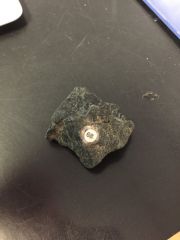
|
-Augite (Pyroxene) -Prominent cleavage in 2 directions that are close to 90 degrees apart -Common chemical varieties are dark green to black -H=6.5 |
|
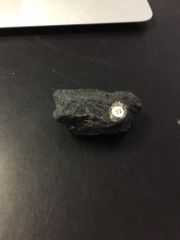
|
-Hornblende (Amphibole) -Prominent cleavage in 2 directions that are close to 60 or 120 degrees apart -Common chemical varieties are dark green to black -H=6 |
|

|
-Quartz -Conchoidal fracture (breaks into curved surfaces) -H=7 -Crystals are hexagonal with prism and pyramid forms common -May be clear, white, smoky, purple, or yellow-brown |
|
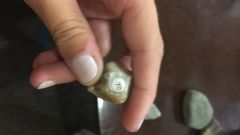
|
-Garnet -Irregular fracture -H=7 -Commonly deep red but may be purple, green, black, or white -Crystals are commonly equant with dodecahedron forms |
|
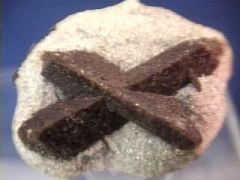
|
-Staurolite -Irregular fracture -Earthy luster when weathered -H=7 -Crystal faces display prominent 90 degree angles -Twinned crystals are common -Typically deep red brown to brown in color |
|
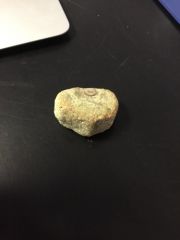
|
-Olivine -Irregular to conchoidal fracture in large crystals -H=6.5 -May be cm-scale single crystals or sugary masses of small crystals -Typically bright green & may show shades of brown to yellow |

